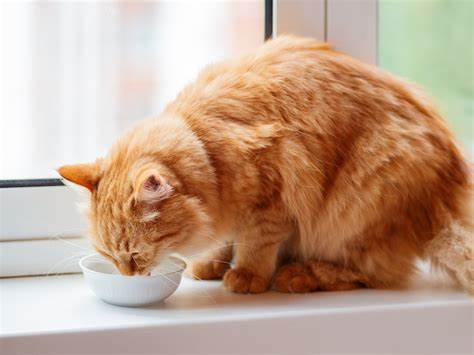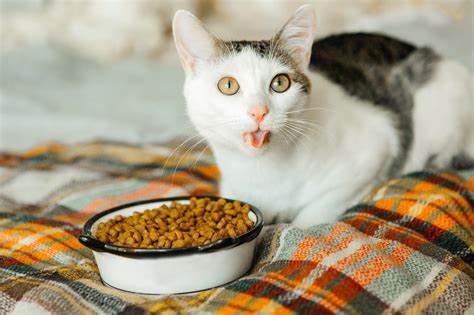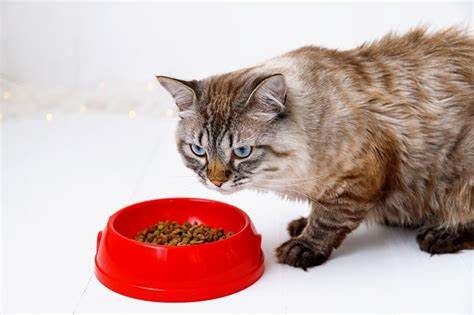
The Ultimate Guide To Low-Fat Homemade Cat Food: Tips, Tricks And Recipes For Health-Conscious Pet Parents
As pet parents, we all want the best for our furry friends. But when it comes to nutrition, many of us are unsure what’s best for them and if homemade food is a viable option. To help you understand the importance of low-fat cat food and provide helpful tips on how to make your own at home, I have created ‘The Ultimate Guide to Low-Fat Homemade Cat Food: Tips, Tricks and Recipes for Health-Conscious Pet Parents’.
When feeding cats homemade meals, there are some general guidelines that need to be followed in order to ensure they receive all the essential nutrients their bodies require. This guide will show you exactly how much protein, fat and carbohydrates should be included in each meal as well as which ingredients are safe or unsafe for cats. You’ll also find delicious recipes tailored especially for kitties so you can easily create tasty dishes with confidence!
By following this comprehensive guide, pet parents can rest assured they’re providing their cats with balanced meals made from fresh ingredients without unnecessary fats or additives. So let’s get cooking!
Nutritional Benefits Of Low-Fat Cat Food
As pet nutritionists and experts, we understand that cats require a balanced diet to remain healthy and active. Low-fat cat food provides essential nutrients while supporting the overall health of your furry companion. A low-fat diet for cats can help reduce the risk of obesity, diabetes, heart disease, digestive problems, and other conditions associated with weight gain. Additionally, switching from high fat diets to lower fat recipes can improve the absorption of key vitamins and minerals.
Homemade cat food is an excellent way to provide your kitty with a nutritious meal full of natural ingredients. Through careful selection of quality proteins, grains, vegetables and fruits you’re able to create meals tailored specifically for your pet’s needs. Understanding the nutritional benefits of low-fat cat food is essential in order to make informed decisions about crafting homemade meals for your feline friend. With this knowledge under our belts, let’s turn now towards guidelines for making homemade cat food.
Guide To Low-Fat Homemade Cat Food
As pet parents, it’s important to understand the guidelines for making homemade cat food. Following these low-fat guidelines will ensure your feline is getting all of the essential nutrients they need while maintaining a healthy diet and lifestyle. When preparing homemade cat nutrition, make sure you are using fresh ingredients that are specifically formulated for cats. This includes selecting high-quality proteins such as fish or poultry, carbohydrates like brown rice and oats, and fats from sources like olive oil. Additionally, adding in fruits and vegetables can provide your pet with additional vitamins and minerals.
It’s also important to consider portion sizes when creating meals for your cat. Generally speaking, adult cats should eat about two to four ounces per day – depending on their size. Make sure you’re monitoring how much is being consumed daily so that you can adjust accordingly if necessary. Furthermore, always be aware of any allergies or sensitivities your cat may have so that their diets don’t become compromised. With these tips in mind, crafting healthy and delicious recipes for your kitty should come easy!
Healthy And Delicious Recipes
It’s time to start creating some healthy and delicious recipes for your feline friend! With a few simple ingredients, you can whip up nutritious meals that will keep your cat happy and healthy. Low-fat recipes are key when it comes to making homemade cat food; the healthful ingredients provide all of the necessary nutrients without any extra fat. Here are some ideas for tasty treats:
- Nutritious Meals
- Boiled chicken with quinoa or brown rice
- Ground beef mixed with sweet potatoes
- Salmon patties made with oatmeal
- Tasty Treats
- Freeze-dried liver cubes as occasional snacks
- Homemade tuna balls rolled in wheat germ
- Cat grass sprinkled over canned pumpkin puree
By providing your kitty with these low-fat options, they’ll stay full longer while getting plenty of essential vitamins and minerals. Plus, homemade pet food is cheaper than store bought varieties and you know exactly what’s going into each meal! You don’t have to compromise on taste either; cats love variety and you can easily tailor their diet to include different flavors through spices like parsley, rosemary and thyme. So why not get creative in the kitchen? Your furry pal will thank you!
Conclusion
As a pet nutritionist, I’m always thrilled to see pet parents taking the initiative and making their own cat food. Not only does it provide cats with essential nutrients they need for optimal health, but it also gives owners more control over what goes into their pets’ meals. Some may worry that low-fat homemade cat food is not as nutritious due to its reduced fat content; however, this could not be further from the truth. Low-fat foods are just as nutrient dense when combined with other healthy ingredients like high quality protein sources, fruits and vegetables.
In conclusion, feeding your feline friend a low-fat diet is an excellent way to promote good health while still providing them with delicious and nutritionally balanced meals. By following the guidelines outlined in this guide and using some of the recipes provided, you can easily create enjoyable meals that fit within your cat’s individual dietary needs. Feeding cats homemade cat food can help ensure a long and happy life for our furry friends!

Stephanie Ansel is a well-known writer and journalist known for her unique and captivating writing style. She has written many articles and books on important topics such as the lifestyle, environment, hobbies, and technology and has been published in some of the biggest newspapers and magazines. Stephanie is also a friendly and approachable person who loves to talk to people and learn about their stories. Her writing is easy to read and understand, filled with lots of details and information, and is perfect for both kids and adults who want to learn about important topics in an interesting way.





